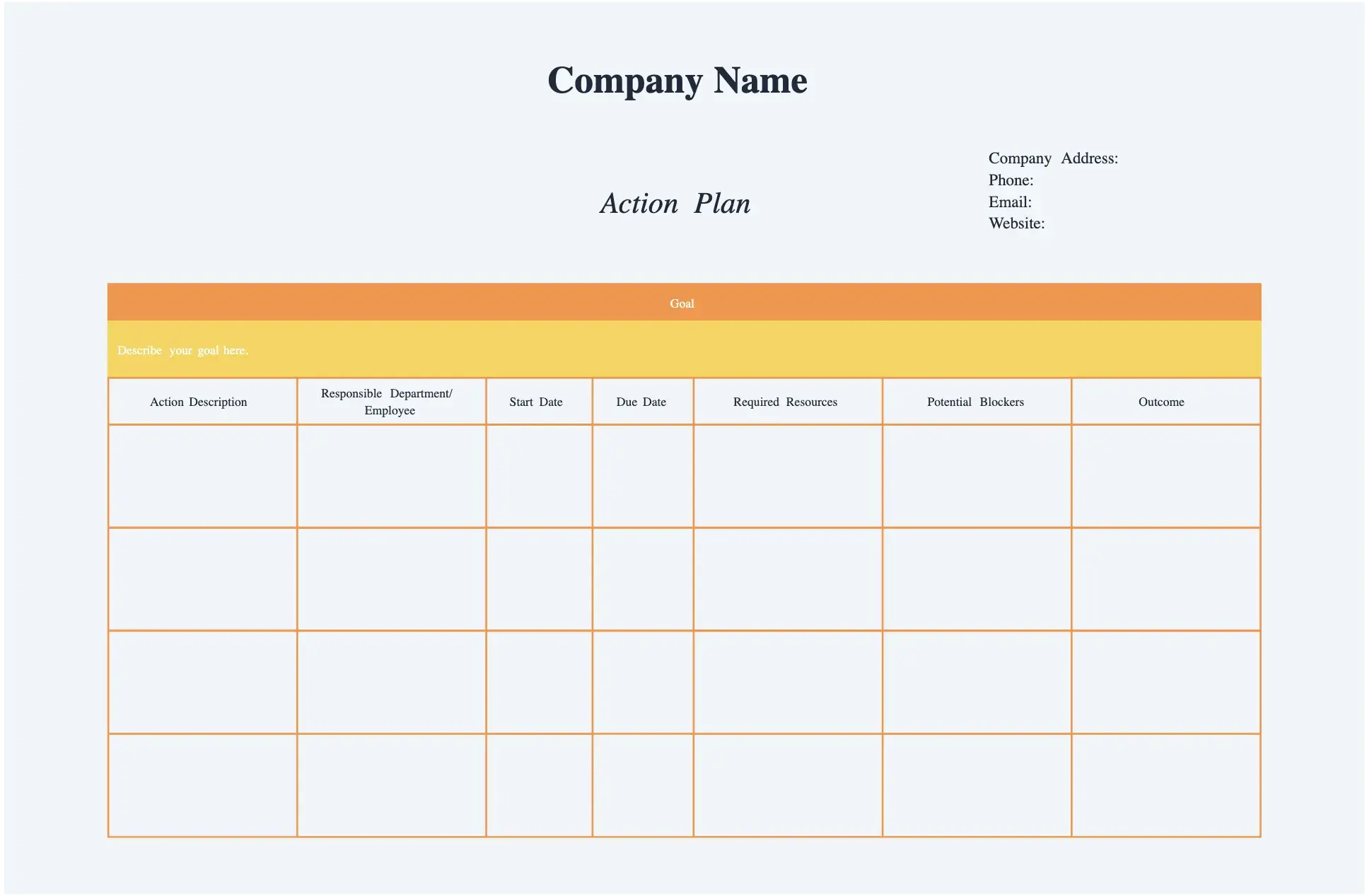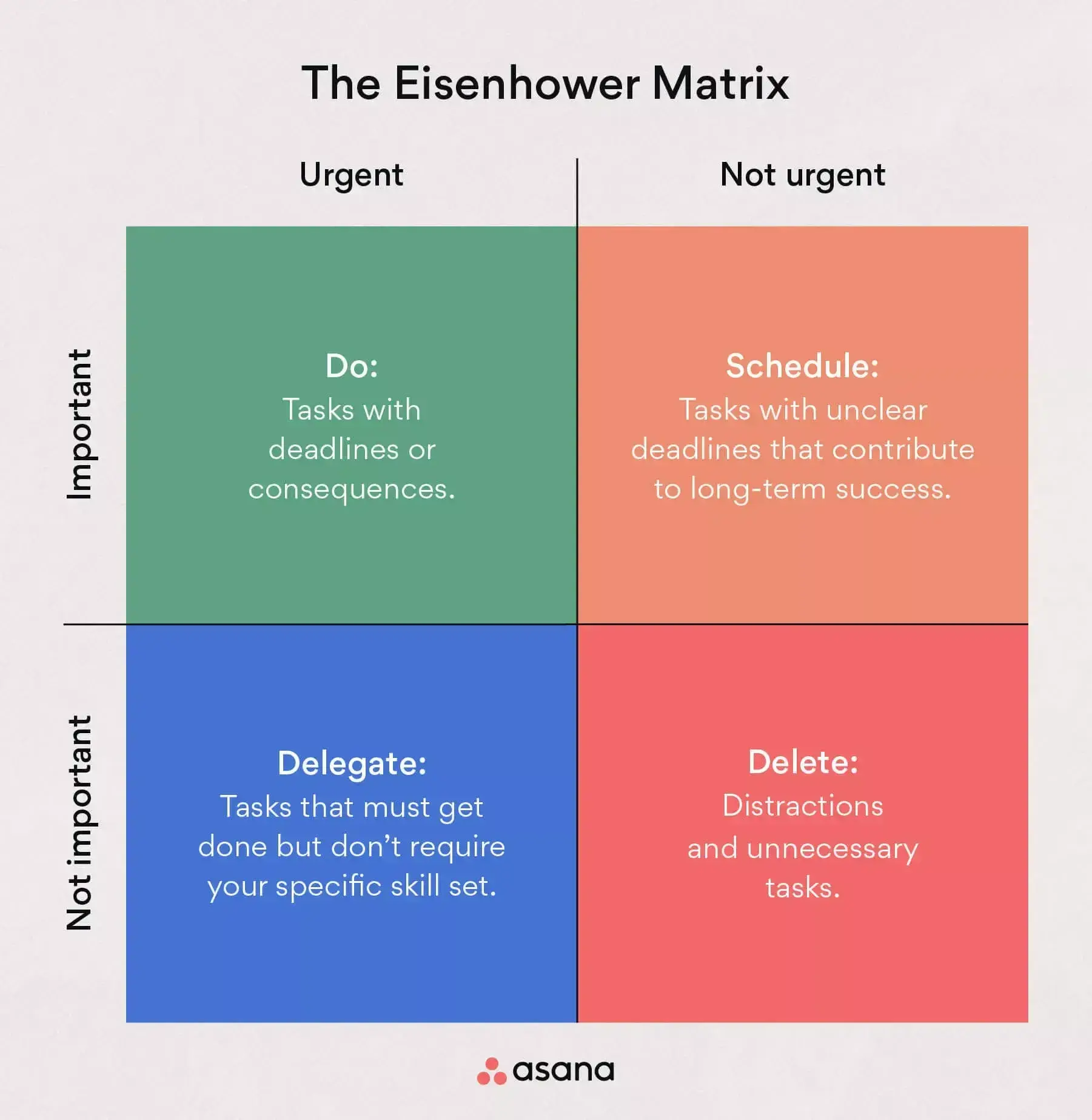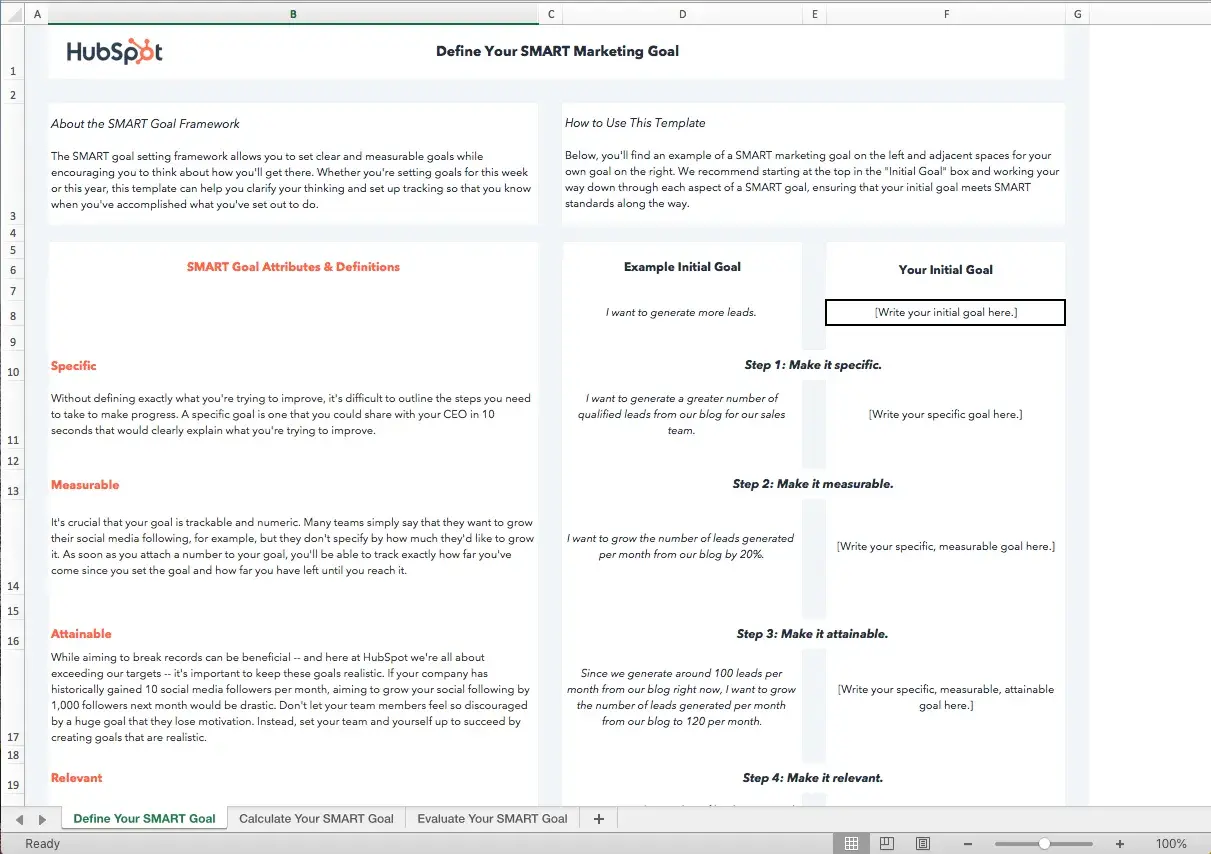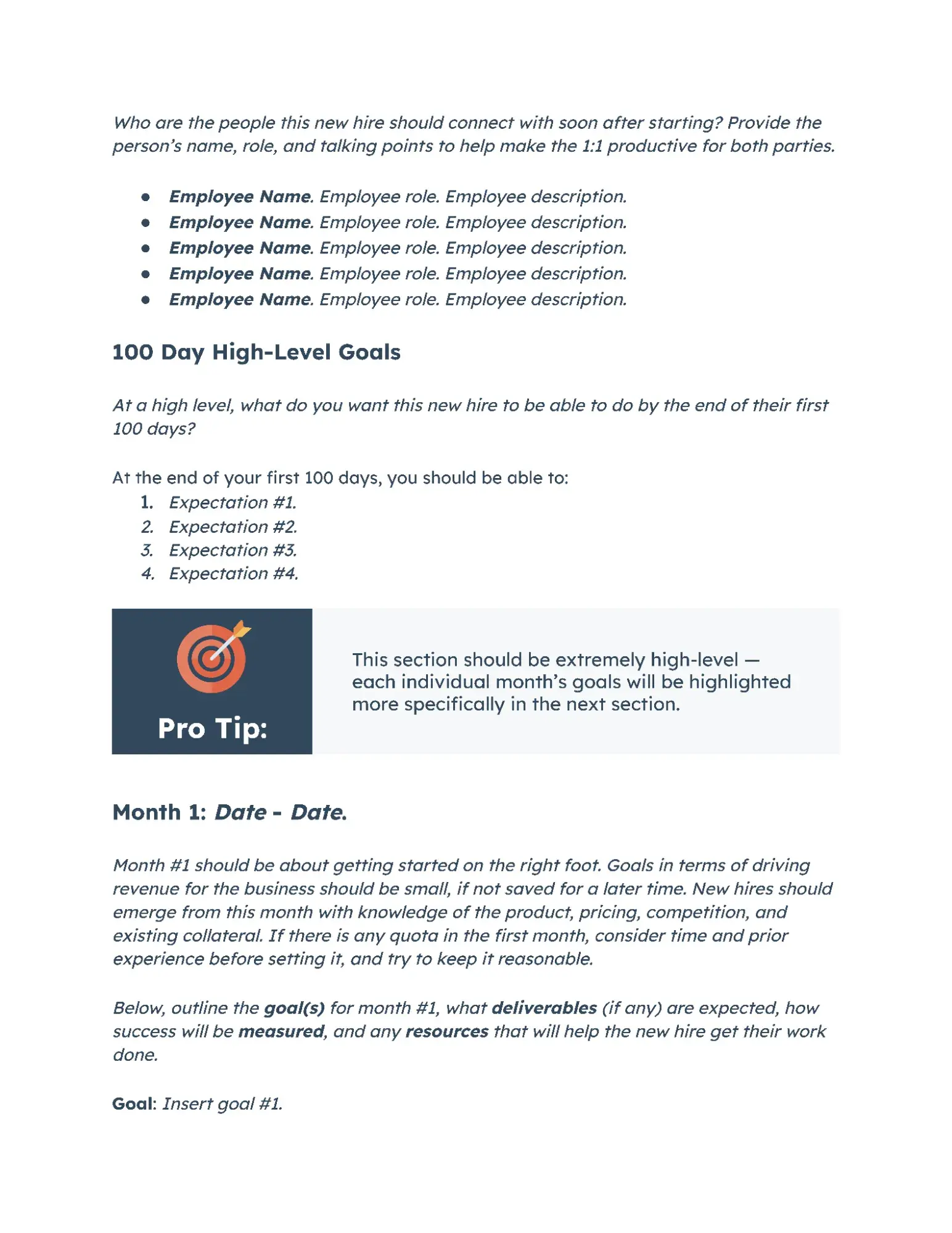Not only did we deliver on time, but the campaign exceeded all expectations, generating double the engagement we had projected. That experience taught me the true power of structured planning.
In my experience, an action plan is crucial when it comes to marketing. It could mean the difference between a campaign that sizzles and a campaign that fizzles.
Let’s take a closer look at what these plans actually are, how they can benefit you, and how to make one.
Table of Contents
What is an action plan?
An action plan is a proposed strategy for whatever you want to accomplish. It’s a clear, detailed list of all the steps you need to take to reach your goal, along with a proposed timeline of when you’ll complete each step or task.
Perhaps you’ve heard of action plans in the past but never tried to create one of your own. Or maybe this is a brand new concept to you, and you’re pretty sure you just heard a choir of angels in the background.
What is the purpose of an action plan?
Action plans are designed to help you reach your goals faster. By breaking down projects into smaller steps, you can ensure that you:
- Meet your goal in a timely fashion.
- Don’t skip a step.
- Communicate effectively with team members.
- Set reasonable expectations for what you can accomplish in a specific period of time.
While they will vary in complexity, action plans are good for small projects, large projects, projects that you complete on your own, and projects that involve other team members or individuals outside of your organization.
Convinced you need action plans in your life? Good. Let’s take a look at the steps necessary to implement them.
How to Write an Action Plan
Action plans can be as simple or complex as they need to be. However, before you start writing out the steps to reach your goal, you’ll need to identify something very important … your goal, of course!
1. Define your goal.
What is it that you’d like to accomplish? Is there a new campaign you need to prepare before a specific launch date? Maybe you’re teaming up with another business or a nonprofit for cross-promotion. Perhaps you’re looking to increase brand awareness through various channels.
Whatever your goals, get very clear on what you want, why it’s important, and when you need it done. I highly recommend creating a SMART action plan by incorporating SMART goals into it.
SMART stands for:
- Specific
- Measurable
- Attainable
- Relevant
- Timely
This framework helps you determine if your goals are realistic, identify what actions are needed to reach your goals and define what success looks like.
Download HubSpot’s free SMART goals template now.
2. Use a template.
Once you’ve determined what you want to accomplish and when it will need to be done, it’s time to start devising your plan.
I recommend using a template or tool to capture your action plan and share it with anyone who needs to be involved. (You’ll find some options in the next section.)
3. Brainstorm.
Consider all the steps that need to get done to complete your project. I find it helpful to start with larger aspects of the project and then break those down into smaller tasks. No task is too small to be listed (let’s be honest, checking things off a to-do list feels amazing).
4. Delegate and assign responsibilities to team members.
You don’t have to go it alone! Hopefully, you have a trustworthy team standing by to help complete tasks and inch you closer and closer to the finish line. This also allows you to identify what resources you need to achieve the goal.
5. Schedule due dates.
If your project needs to be done by a specific day (which it should, or it could stretch on indefinitely), then each task will have its own due date. Keep in mind that some tasks can be worked on at the same time, while others will require that a previous task has been finished before you can start the new one.
6. Set up alerts to keep yourself (and your team) on track.
It’s very easy to get caught up in the day-to-day grind and forget about a larger project looming in the distance. I suggest using your scheduled due dates to set up reminders and pencil in time to work on specific tasks.
7. Track your progress and check in with your team.
I have written action plans that looked top-notch when I wrote them, but as I worked through them, I discovered that things needed to change. You may experience this, too, so if you see that you’re falling behind in the tasks, it may be time to re-evaluate and potentially tweak your action plan.
If you’re working with others, communication is key to ensuring everyone is on the same page, especially if you need to make changes.
8. Celebrate and review.
Completing a project is often cause for celebration, but don’t forget to review what worked and what didn’t for a smoother project next time.
I’ve found that leadership action plans not only help me achieve my goals but also help my team understand what they need to do. They also serve to identify any weak links in my organization.
Action plan formats may differ depending on the needs of your specific project. However, as long as you include the goal, the steps, the people involved, and the due dates, you’ll have a solid plan to work with.
Action Plan Templates
When you’re ready to create an action plan, there’s no need to start from scratch. I’ve pulled together a few templates to provide the framework you need to devise your marketing strategy.
Action Plan Template
Download HubSpot’s free action plan template now.
HubSpot offers two free action plan templates plus instructions for how to fill them out. I like the simple columns that cover all the essentials you need for an action plan: description, priority, due date, assignee, status, risks, and notes.
It makes it easy for you to get right down to business and to share your plan with other stakeholders.
I think another great perk is that you can download the templates in whatever format best suits your business’s needs: Excel, Google Docs, Google Sheets, or Word.
Onboarding Plan Template
Below is an action plan example of a 30-60-90 Day onboarding plan. I like it because it can always be tweaked to onboard individuals into a marketing position or to create a marketing plan for your organization.
Download HubSpot’s free 30-60-90 day plan template.
This template helps you define both high-level goals and more specific ones to be completed within a certain period of time.
Marketing Action Plan Template
A marketing action plan doesn’t have to be complicated to be effective. It may be as simple as this template:

This one takes a slightly different approach than HubSpot’s featured above. It provides columns for description, responsible person, start and end dates, resources, blockers, and outcomes.
As you look for the right action plan template, consider which one matches the needs of your project and goals — or tweak the headers to align with your needs.
Marketing Plan Template
Another resource I recommend is Hubspot’s Marketing Plan Template. This is more than an action plan.
It guides you through the whole marketing campaign planning process. If you’re looking for a template to make your overarching plan, check this one out. Your specific action plans can then fit underneath the umbrella marketing plan.

No matter how you do it, an action plan may take a little bit of time to create. However, I guarantee you’ll save time, energy, and resources when you have a clear plan of action for your next project or campaign.
Tips for Creating an Action Plan
Want to make action planning not only effective but also something you actually look forward to? Check out my tips and hacks that will help you simplify the process and stay on top of your game.
- Use project management tools. Tools like Trello, Asana, or Monday.com can be your best friend for keeping things organized. They let you create, assign, and track tasks with ease while ensuring collaboration with your team is smooth.
- Start with a brain dump. Ever felt like you’re juggling too many ideas? Write everything down — yes, everything — without worrying about order. Once it’s all out of your head, you can start organizing it logically.
- Prioritize like a pro. Not every task deserves your immediate attention. Use tools like the Eisenhower Matrix to figure out what’s urgent and important. By focusing on those first, you’ll avoid the trap of procrastination.

- Batch similar tasks. Why switch gears constantly when you can group related tasks? I find batching not only saves time but also helps me stay in the zone, making my workflow smoother.
- Set micro-deadlines. Big projects can be daunting, but breaking them down into smaller, bite-sized tasks with short deadlines keeps you motivated and helps you make consistent progress.
- Automate reminders. Forgetting tasks is so last season. Set up automated alerts using Google Calendar or your favorite task manager so nothing slips through the cracks.
- Reflect and refine. Progress isn’t just about ticking boxes. Take a step back regularly to review what’s working and what’s not. Adjusting your plan as you go ensures you’re always on the right track.
Give these a try, and you’ll find yourself cruising through even the most complex projects with confidence and ease.
Start Planning Today
Equipped with this guide, templates, and tips, I hope you’re able to jump right into creating an action plan.
I know you’ll feel more organized and peaceful with everything mapped out, ultimately leading to saving time and successfully executing your projects.
Editor's note: This post was originally published in November 2021 and has been updated for comprehensiveness.
.png?width=112&height=112&name=Untitled%20design%20(17).png)

.png)



![What is a marketing plan & how to write one [+ examples]](https://53.fs1.hubspotusercontent-na1.net/hubfs/53/marketing-strategy-examples-1-20240801-4880441-1.webp)
![6 Steps to Create an Outstanding Marketing Plan [Free Templates]](https://53.fs1.hubspotusercontent-na1.net/hubfs/53/marketingplan_20.webp)

![How to Build a Market Development Strategy [Free Planning Templates]](https://53.fs1.hubspotusercontent-na1.net/hubfs/53/market%20development%20strategy.jpg)
![How to Build a Robust Direct Marketing Strategy [+ Examples]](https://53.fs1.hubspotusercontent-na1.net/hubfs/53/direct%20marketing.jpg)